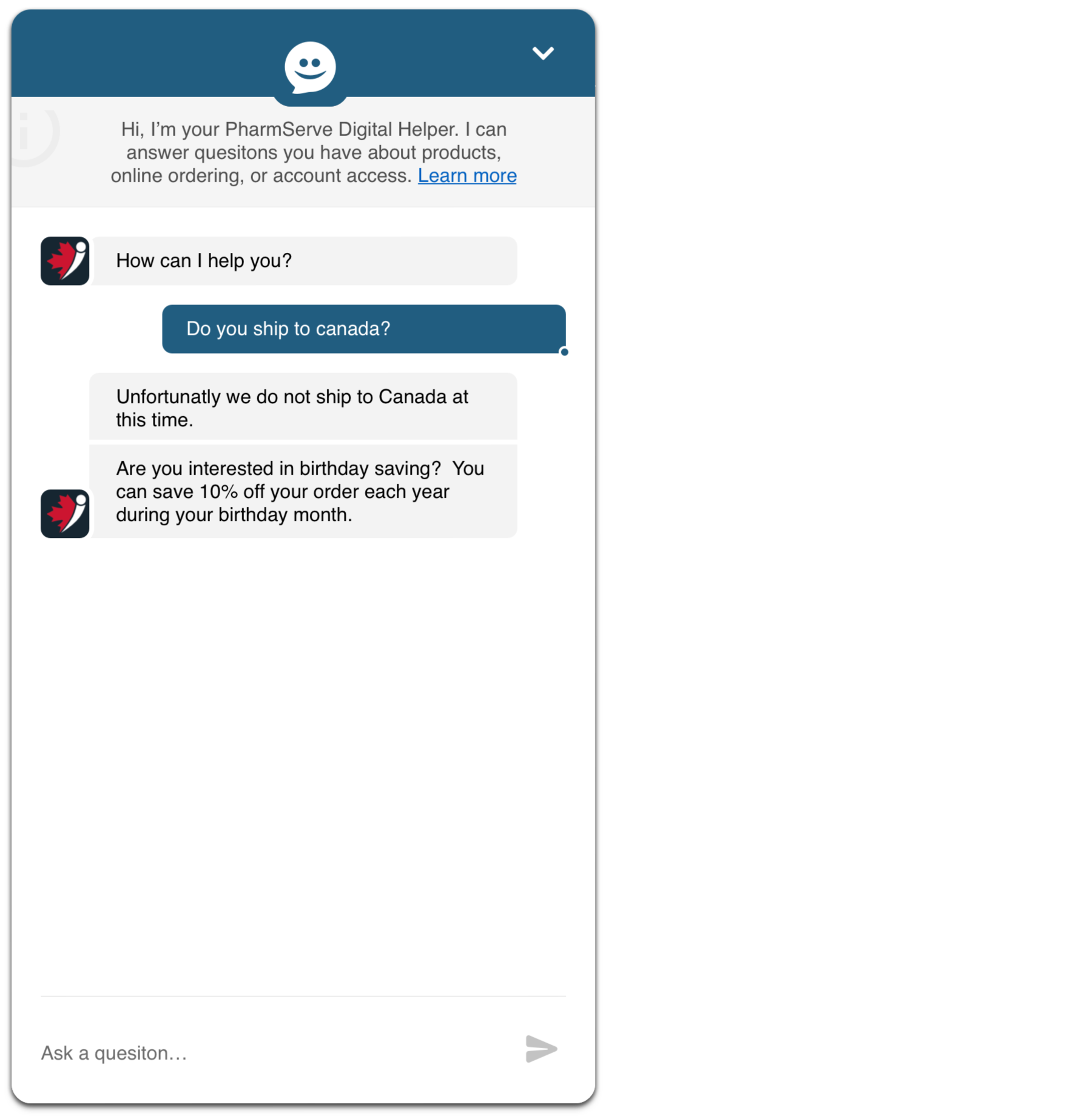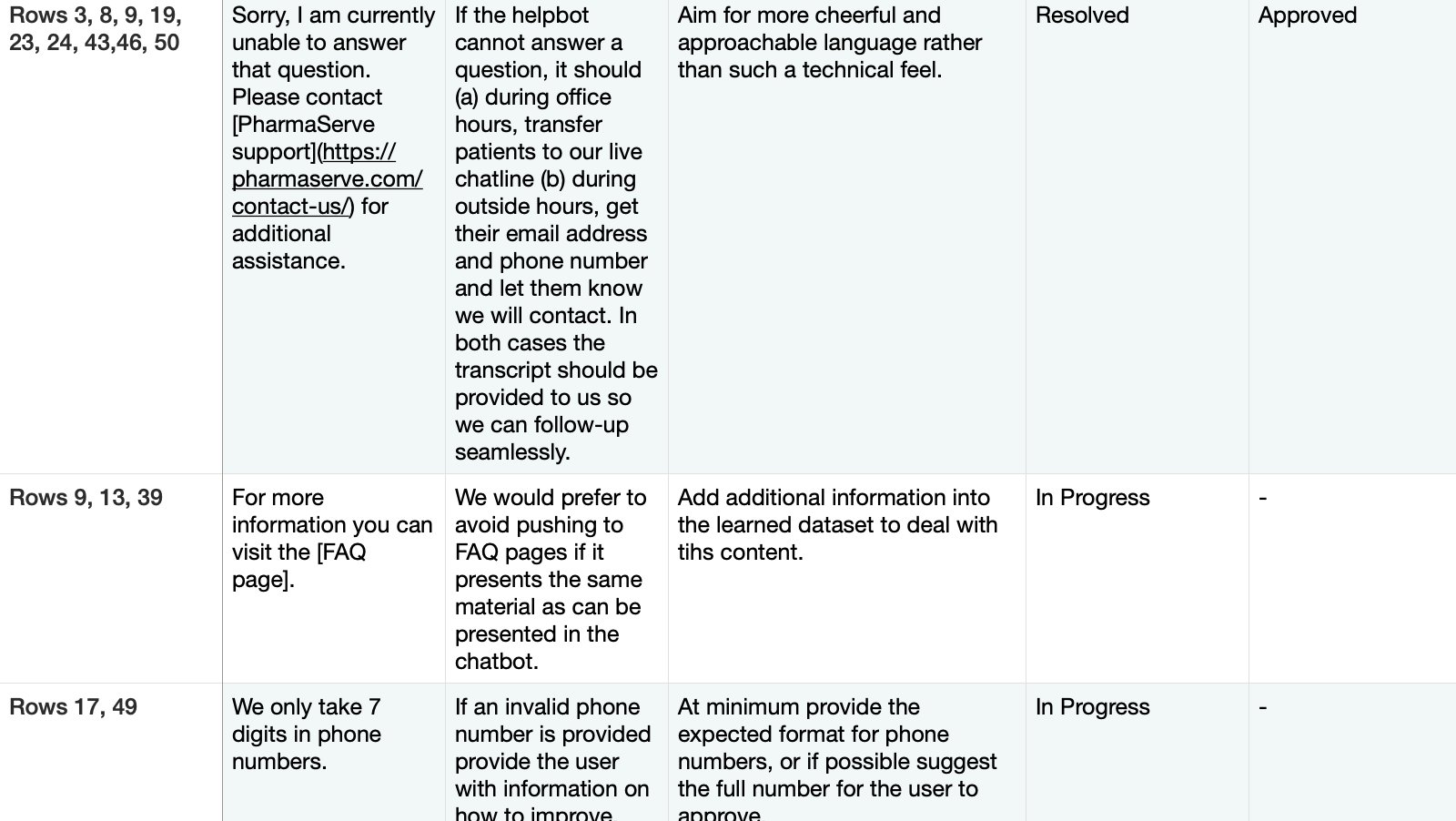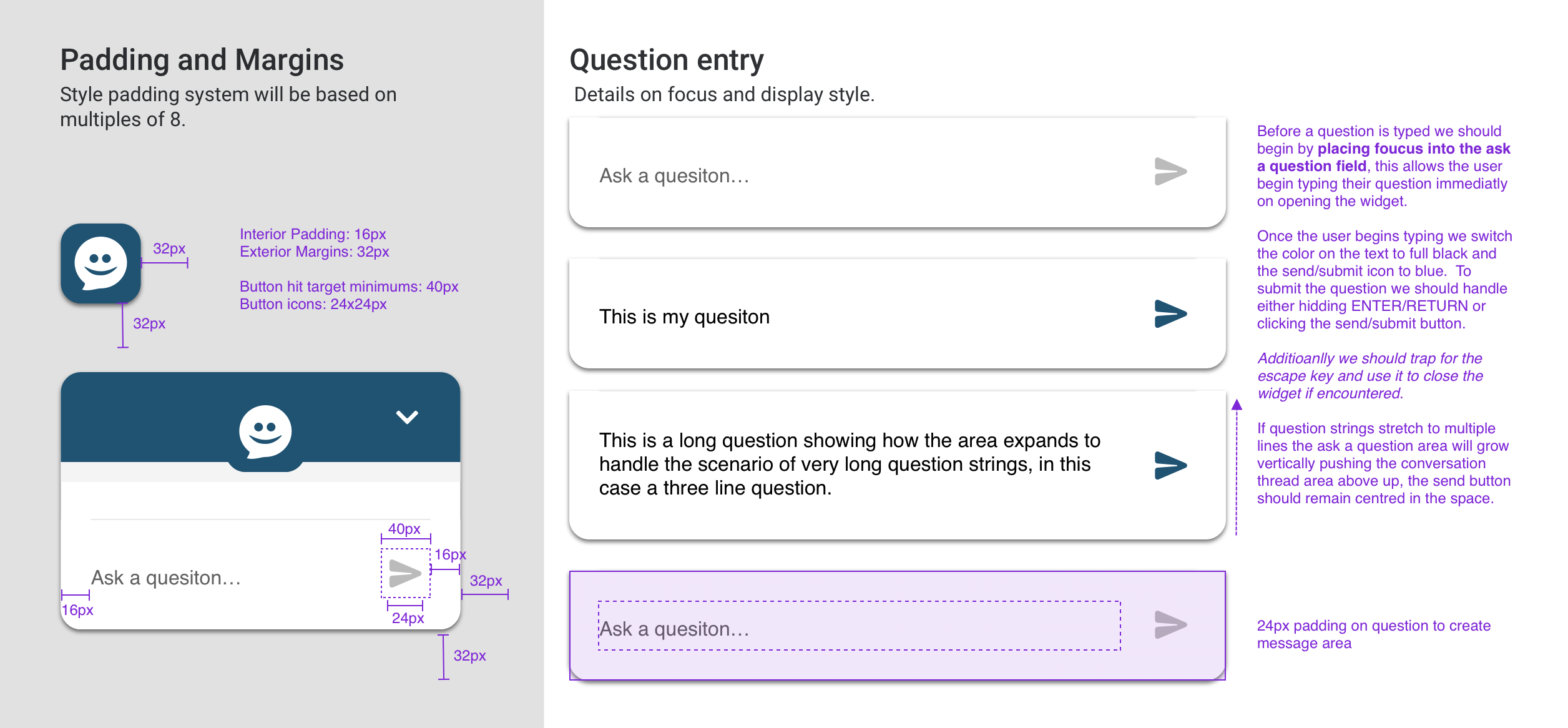Case Study
Powering up first line support with AI
Custom ChatGPT powered AI assistant for online perscription drugs empowered to aid in the sales process, answer common quesitons, and direct users appropriately.
Back to home
Project Overview
PharmaServe was looking to develop an AI assistant for their website to provide immediate front line support in address common customer questions rather than rely on more expensive existing human support channels such as chat, email, and phone. The goal was to reduce the human support interaction by 15% while maintaining customer satisfaction and conversion rates.
Team
This project saw a small team including myself functioning as the overall lead and designer working closely with our lead developer and a project manager to keep track of deliverables back and forth with the client.
Solution
Our solution was built on the scalable infrastructure provided by Heroku to allow application scaling as volumes increase over time. The system was built using the OpenAI ChatGPT base layer and augmented with customized chat prompting and collected through website scraping, analysis of existing human chat conversation logs, email history, chat transcripts, and a custom performance review and weighting system.


